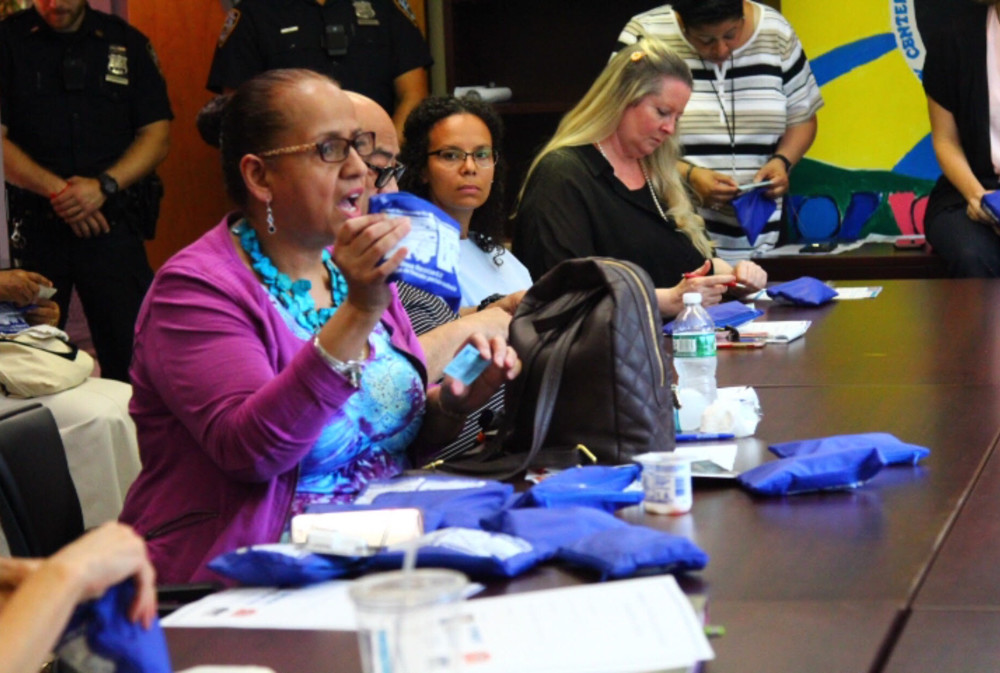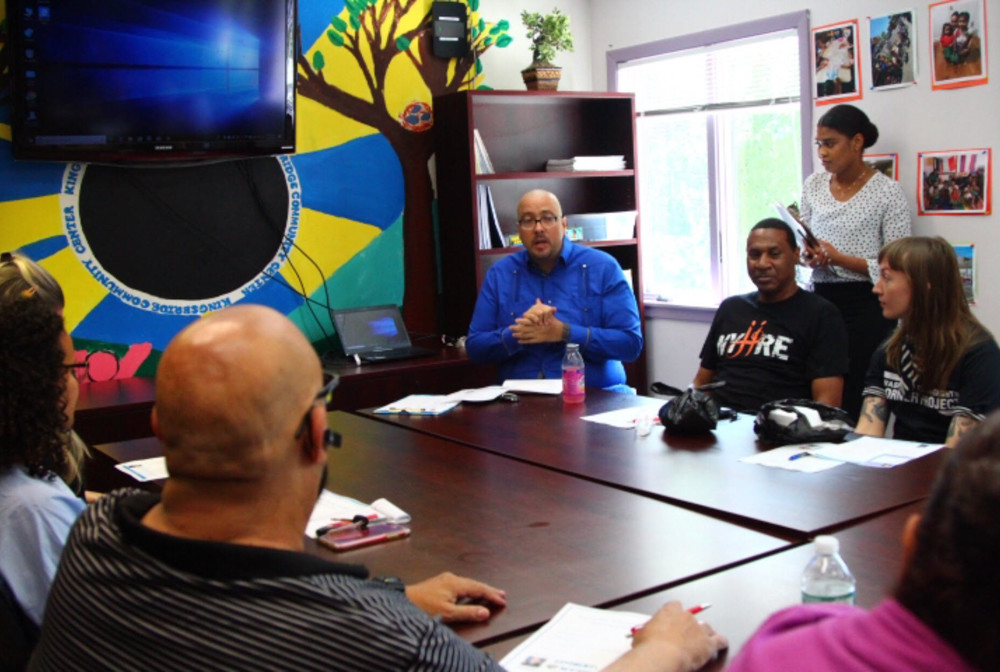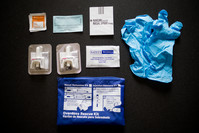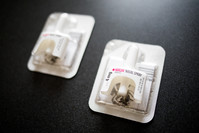Combat overdoses with safe injection sites
Amidst soaring overdose deaths from a nationwide drug epidemic, no corner of the Bronx is immune.
Yet, what some critics cast as a radical approach to fighting addiction, proponents say offering drug users safe places to inject illegal narcotics is a forward-thinking, evidence-proven system that could deal a major blow to what state health officials have called an unprecedented opioid crisis.
The war on drugs has failed, critics argue. And if state Sen. Gustavo Rivera has his way, safe injection sites could become a reality right here in the borough.
Granted, the sites face daunting hurdles, calling for the support of several district attorneys and the state health department. And they could violate federal law.
But the first — and perhaps most crucial — step, the senator says, is saving lives.
Rivera hosted a small training session at the Kingsbridge Heights Community Center last week with the 50th Precinct and members of two social services groups, Vocal-NY and Exponents Inc., to demonstrate how to administer naloxone, an opioid antagonist that helps someone who has overdosed to start breathing again.
But Rivera wants to do more than help save lives. He’s pushing legislation to establish safe injection sites where trained personnel would provide sterile syringes, collect used needles, and administer naloxone to drug users in the event of an overdose, as well as information about treatment.
“The fact that we have just recently, in the last couple of years, discovered” the opioid crisis “in the rest of the country doesn’t mean that the Bronx hasn’t suffered from it for a long time,” Rivera said. In fact, most of the West Bronx — which includes neighborhoods like Marble Hill, Kingsbridge and Riverdale — has “some of the highest rates of death by overdoses, still to this day, which is incredibly tragic.”
Such a deadly problem demands immediate action. “We have to be forward-looking,” Rivera said. “We can’t turn our face away from it.”
Training residents in how to use naloxone is a critical part of making sure “people have the tools available,” Rivera said. While many might associate opioids with street drugs like heroin, they also include prescription painkillers like oxycodone, available under brand names like OxyContin and Percocet.
Such trainings also offer a chance to educate residents about what Rivera calls “the next step in harm reduction” — safe consumption services — and the bill he’s sponsoring to authorize such spaces.
“They’re essential to provide a non-stigmatized place where people can be treated as human beings, with a level of dignity and respect, first and foremost,” Rivera said, “and then be provided access to services.”
Naloxone is “very simple” to administer, said Yvonne Soto, the training leader at Exponents who also resides in Marble Hill. The medication can be injected, or even administered nasally, and acquired with a prescription, or through a standing order at more than 2,000 pharmacies in the state, according to the health department.
“Many people think, ‘Why do I need to know this?’” Soto said. “‘My kids don’t use drugs, (or) my sisters, my brothers. This is not important to me.’ Well, because you don’t know if your sister or your brother is using drugs.”
In fact, at Exponents’ own drug treatment program, “It’s the regular Joe Schmoe that comes in for services,” Soto said. “It’s not necessarily just these individuals in the corner, hiding, using drugs. It could be your neighbor. It could be your son’s friend that comes over and overdoses in your bathroom. If you’re not ready, then you’re dealing with those feelings of, ‘What could I have done differently? Why wasn’t I prepared?’”
Police officers also receive naloxone training, said Sgt. Mark Giordano, neighborhood coordination officer supervisor for the 50th Precinct.
“The more people we can get trained and get (naloxone) in their hands, the better it is,” Giordano said. “It’s real simple.”
While opioid overdoses may not be as big of an issue in the 5-0 as in other parts of the borough, that’s not to say it’s a non-issue.
“Usually (drug) users will use within 15 minutes of buying,” Giordano said. “Every once in a while you come across somebody, let’s say, on the highway, at the rest stop,” in their car, who could be another life lost. “So obviously, it’s important for all of us to be trained.”
Donna Demetri Friedman, executive director of Mosaic Mental Health in North Riverdale, says she’s noticed more clients seeking treatment for opioid addiction as a result of aggressive marketing and overprescribing of prescription painkillers tracing back to the 1990s. Her staff is trained in administering naloxone, and it’s carried onsite.
Overdoses — whether from heroin or physician-prescribed narcotics like fentanyl — affect “all walks of life,” Friedman said. “People have access to pain medicine regardless of your background.”
“Opioids are highly, highly addictive and very challenging to treat,” Friedman added. “If children or young people have access to painkillers, they are at risk of becoming addicted,” which can lead them to seek out other drugs. “It’s a problem across the board.”
Talking to kids — and common sense — are paramount in preventing it from happening in the first place, Friedman said.
“All parents should be educating their children, and it should be discussed in the schools,” Friedman said. “And, also, doing things that are logical, like, don’t leave painkillers in the medicine cabinet.”
While some skeptics may view safe injection sites as a form of enabling, Friedman disagrees.
“Addiction needs to be treated on a continuum,” Friedman said. “Until people are really ready, harm reduction is better than no intervention at all. We need to remember that addiction is a disease, and we need to help people on whatever level of the spectrum they’re on.”
The benefits of Rivera’s bill — which currently is in the senate health committee — could be far-reaching, beyond preventing overdoses and steering addicts toward treatment. Safe injection facilities, Rivera said, could also reduce illnesses like HIV and hepatitis C that stem from sharing needles.
“It is an approach that works, that has been proven in other parts of the world,” Rivera said, including in Canada and Europe. “I believe that it is about time we get it done in the state of New York. And I’m going to, hopefully as a majority member next year, be trying to push forward.”













